Why does the new Trek Madone have such a huge hole in it?
Introduced at the end of June, the new generation Trek Madone has left no one indifferent due to its bold design, which highlights the elimination of the IsoSpeed absorption system to replace it with the IsoFlow, which aims to further improve the aerodynamics of Trek's fastest bike.
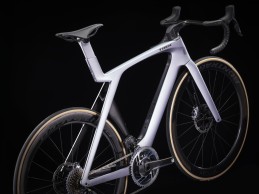
Trek's new aerodynamic solution for its Madone that attracts a lot of attention
Since its first appearances in competition, during the Critérium du Dauphiné and subsequent presentation before the Tour de France, the latest representative of Trek's most charismatic bike has not gone unnoticed for its innovative design in which the brand has created a seat tube that is divided into two halves, forming a kind of rhombus on which the seat tube continues suspended in the air.
Even a cyclist like Mads Pedersen found an alternative use for this design as he showed us during the team presentation before the start of the Tour de France.
RECOMENDADO

Black Friday Garmin 2025: the ultimate guide to choosing your GPS at the best price

How to wash your cycling clothes? 10 keys to make them always look new

The real importance of signing up for a race

The best road bikes of 2025
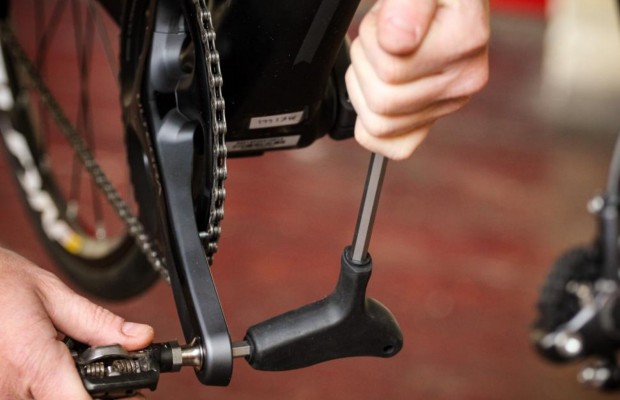
How to change the pedals of any bike in 5 steps
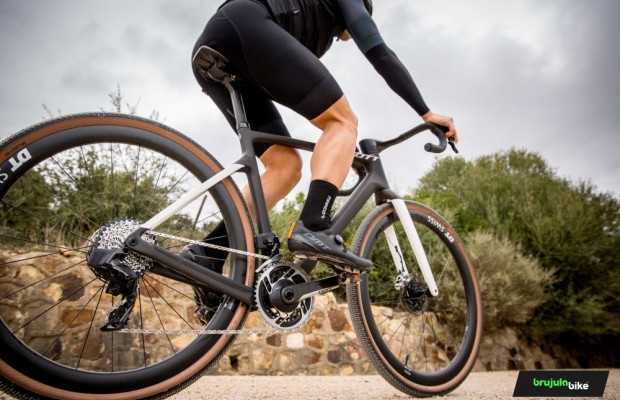
The best gravel groupsets of the moment
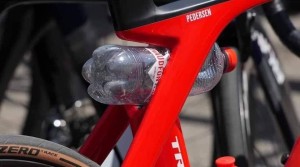
There are several reasons that have led Trek beyond the always important aesthetic factor and that have achieved its goal from the beginning: to get people talking about this new Trek Madone.
Firstly, aerodynamics, an essential element in the concept that the Trek Madone has been used for years as a fast bike compared to its companion in the Émonda catalogue, which is designed to be as efficient as possible on climbs.
In the CFD software simulations prior to the creation of this model, Trek has included as a new feature calculations related to the interaction of the rider with the airflow over the bike. In particular, the low pressure zone behind the saddle is an important source of aerodynamic drag.
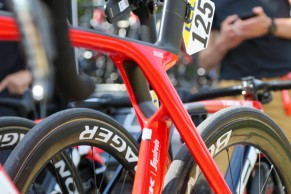
With this split tube design, Trek's intention is that the airflow to the seat tube is not split and separated as in a conventional design, but instead is concentrated in the central area to efficiently fill the low-pressure zone and reduce drag generated by the airflow.
An innovative solution that is added to the other aerodynamic improvements included in the bike, such as the narrow handlebars in the lever area that opens towards the curve so as not to lose handling, or the new dimensions of the tube profiles adapted to the greater permissiveness granted by the UCI regulations after their latest revision.
Another aspect that the brand considered important in the development of this new Madone was to lighten up the frame compared to the previous version, which had become too heavy by competition bike standards.
The source of this weight gain was the IsoSpeed absorption system, which isolated the seat tube from the rest of the frame and took advantage of the carbon flex to filter out irregularities. In this latest version of the Trek Madone it has been decided to dispense with the IsoSpeed system, replacing it with the aforementioned IsoFlow, which still maintains a certain amount of flex by leaving the end of the seat tube floating over the gap created.

In any case, on today's bikes, capable of accommodating large balloon tyres and with the widespread use of 25 and even 28 mm tyres, the task of filtering impacts has been shifted from the frame structure to the tyres, allowing engineers to focus on making a stiffer and more effective bike.
By dispensing with the IsoSpeed system and the evolution of carbon fibre quality and manufacturing methods, Trek has been able to save a remarkable 150 grams.
A bike with which Trek has managed to demonstrate that a bold design and optimum performance do not have to be at odds but, as is the case with this new Madone, results in a bike that leaves no one indifferent and improves on the capabilities of its predecessor.